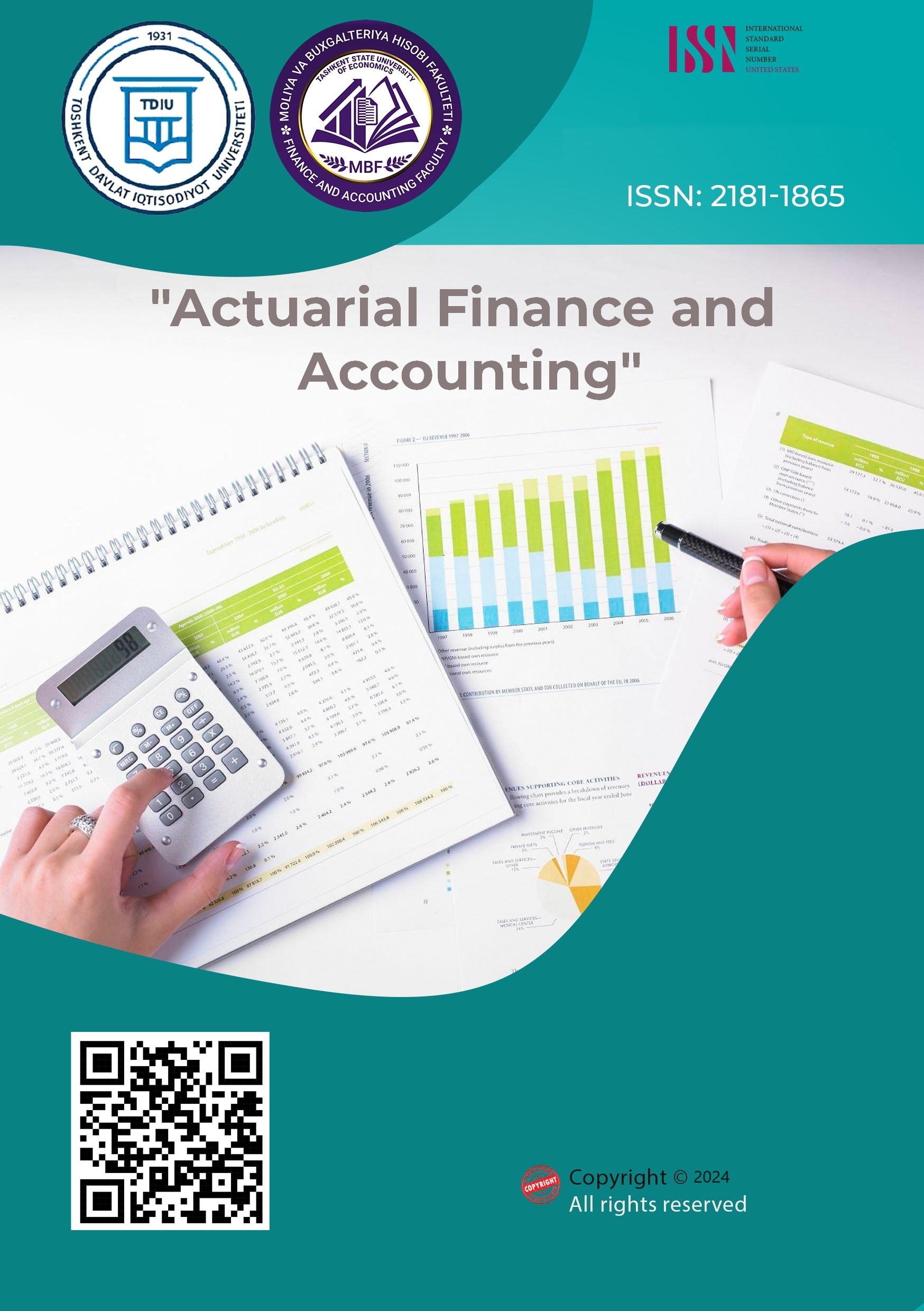KICHIK KORXONALARDA INNOVATSION FAOLIYATNI STRATEGIK BOSHQARISH
Ключевые слова:
strategik boshqarish, milliy iqtisodiyot raqobatbardoshligi, innovatsion jarayonlar, innovatsion faoliyat, tashqi omillar, SWOT tahlili, moliyaviy indikatorlar, innovatsion tаdbirkorlik, texnologik innovatsiyalar.Аннотация
Maqolada mamlakatimizda innovatsion jarayonlarni rivojlantirishga bo‘lgan ehtiyojning kuchayishi, iqtisodiyotini modernizatsiyalash sharoitida kichik biznes va xususiy tadbirkorlik sub’ektlari faoliyatini samarali boshqarish strategiyasini yanada takomillashtirish, innovatsion faoliyatini strategik boshqarish samaradorligini oshirish bilan bog‘liq dolzarb masalalar tadqiq etilgan.
Библиографические ссылки
O‘zbekiston Respublikasi Prezidenti Shavkat Mirziyoyevning Oliy Majlisga Murojaatnomasi Internet manba “prezident.uz”. 2020 yil 24 yanvar
O’zbekiston Respublikasi Prezidentining PQ-3698-sonli 2018 yil 7 maydagi “Iqtisodiyotning soha va tarmoqlariga innovatsiyalarni joriy qilish mexanizmlarini takomillashtirish bo’yicha qo’shimcha chora-tadbirlari to’g’risida”gi Qarori.
2017-2021 yillarda O‘zbekiston Respublikasini rivojlantirishning beshta ustuvor yo’nalishi bo’yicha harakatlar strategiyasi http://strategy.gov.uz/uz/pages/action_strategy.
O‘zbekiston Respublikasi Prezidentining 2018 yil 21 sentyabrdagi “2019-2021 yillarda O‘zbekiston Respublikasini innovatsion rivojlantirish strategiyasini tasdiqlash to’g’risida”gi PF-5544-sonli Farmoni.
Ismatov R.O. Sanoat korxonalarida innovatsion faoliyatni boshqarish samaradorligini oshirish. – Monografiya. “ARDJUMAND MEDIYA” nashriyoti. – Namangan, 2023. – 144 b.
Ismatov R.O. Improving the efficiency of management of innovative activities in industrial enterprises. Asia pacific journal of marketing & management review. ISSN: 2319-2836 impact factor: 7.603 vol 12, issue 08, 2023
Ismatov R.O. Improvement of attraction of investments in regional economic development. Asia pacific journal of marketing & management review. ISSN: 2319-2836 impact factor: 7.603 vol 12, issue 08, 2023
Oltinovich, I. R. (2019). Improvement of Investment Activity in Ensuring High Rates of Economic Growth. International Journal on Integrated Education, 2(5), 68-73.
Худойқулов, С. (2022). Ўзбекистонда кўчмас мулкни солиққа тортиш тизимини такомиллаштириш. Архив научных исследований, 4(1).
Toshmamatovich, T. U. (2021). The problems of determining the cadastre value of land in taxation of real estate. In Euro-Asia Conferences (Vol. 4, No. 1, pp. 96-99).
Тулаков, У. Т. (2020). Результаты налоговых реформ, осуществляемых в Узбекистане. Экономика и бизнес: теория и практика, (3-2), 190-194.
Toshmamatovich, T. U., & Shafoat, O. G. (2020). Bases of real estate taxation in Uzbekistan. International Journal of Psychosocial Rehabilitation, 24(6), 2109-2114.
Tulakov, U. T., & Xudayarova, Z. Y. (2021). Prospects for property tax development. Central Asian journal of innovations on tourism management and finance, 2(6), 66-71.
Tolakov, U. T., & Boypulatov, A. (2019). The new preliminary development of the tax system of the republic of Uzbekistan. International Journal of Advanced Research in Management and Social Sciences, 8(5), 98-105.
To‘lakov, U. T. (2021). Soliqlar va soliqqa tortish: O ‘quv qo ‘llanma/UT To ‘lakov, OT Maxmudov; SK Xudoyqulov umumiy tahriri ostida. Termiz: TerDU nashr-matbaa markazi, 365.
Тўлаков, У. Т. (2019). Солиқларнинг мамлакат иқтисодиёти ривожланишидаги роли. Интернаука, (24-2), 49-50.
Загрузки
Опубликован
Выпуск
Раздел
Лицензия
Copyright (c) 2024 Ismatov Raxmatilla Oltinovich (Author)

Это произведение доступно по лицензии Creative Commons «Attribution» («Атрибуция») 4.0 Всемирная.

